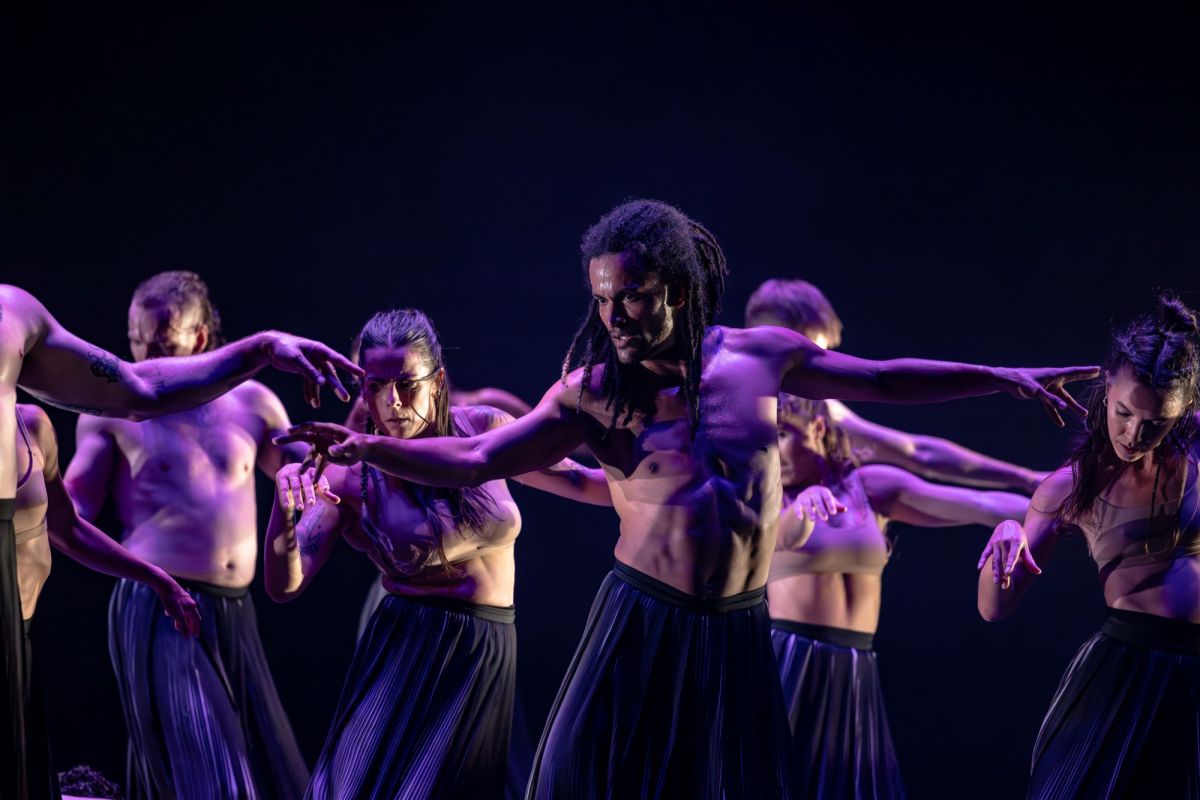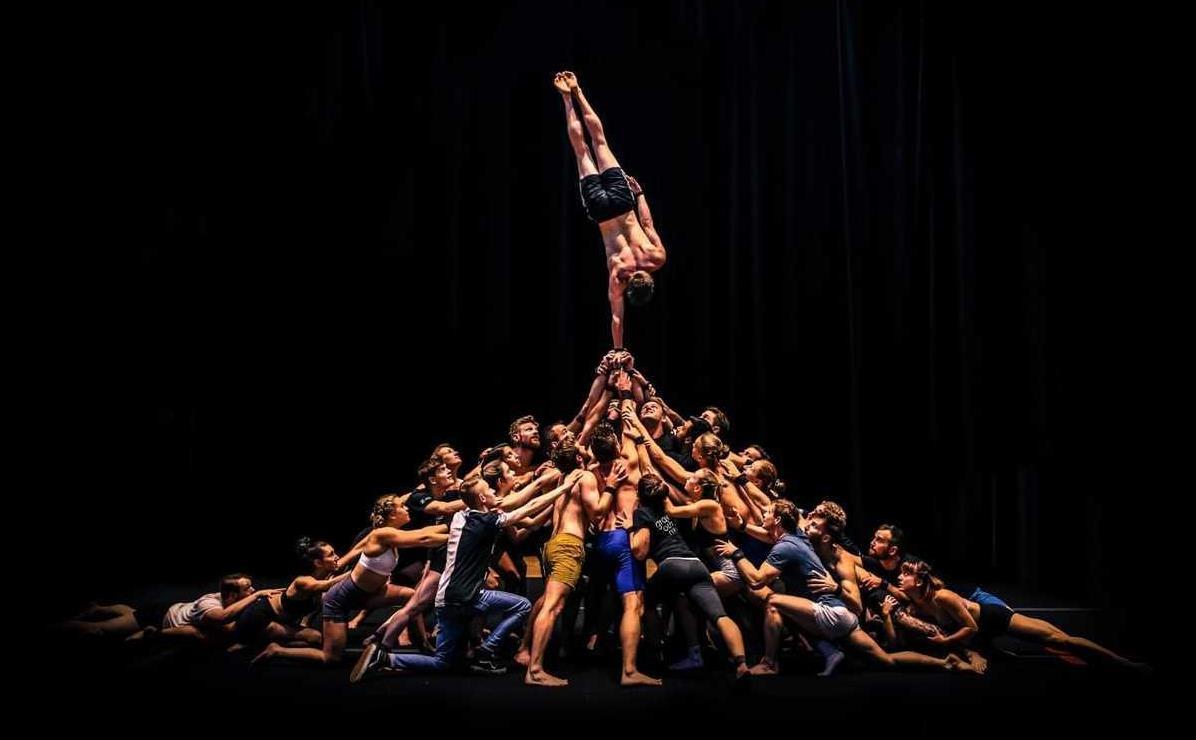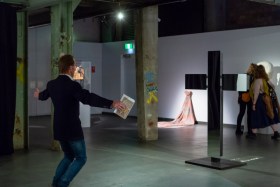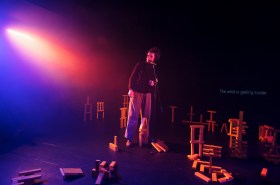When Gravity and Other Myths (GOM) Artistic Director Darcy Grant looks back on 2025, it may well be to mark the moment he added ‘international arts touring strategist’ to his already impressive list of titles.
Appointed to the GOM leadership role four years ago – a time the company, like others, was emerging from COVID ‘survival times’ – Grant says during those tense months, whenever he sat down to crunch the numbers on potential international touring opportunities, he noticed the same insurmountable stumbling block showing up with routine regularity.
‘At GOM, we work with a green-orange-purple card planning system,’ Darcy explains.
‘Green means confirmed, orange means pending and purple means unlikely, but there’s interest.’
Facing planning walls awash with orange and purple, Grant knew he needed more information about the reasons his company wasn’t able to turn more of these uncertain tour arrangements into confirmed shows.
Read: 2026 season announcements: our rolling guide to the performing arts
After digging deeper, he realised the main reason for stalled tour plans was all about money (in this case, a specific shortfall amount).
Grant realised that due to the increased raw costs of international touring since COVID, the new costs were outpacing the budget caps that international presenters could afford to pay when buying-in these shows.
He explains that for Gravity and Other Myths, that cost shortfall – which continues to this day – is around 30% of the company’s overall touring costs.
‘It really comes down to that 30% portion of money that the presenters can’t afford, and we can’t afford to pay either.
‘And that is the main reason why our ‘orange card’ tours can’t proceed.’
‘International touring is what keeps me up at night’
Grant’s is far from the only successful small-to-medium performing arts company currently feeling this touring pain.
Contemporary dance choreographer and director of Stephanie Lake Company, Stephanie Lake, says that while her company’s work is in high demand from international presenters, she is often forced to decline touring invitations due to funding shortfalls.
‘International touring is definitely the thing that keeps me up at night,’ Lake tells ArtsHub.
‘We have no shortage of invitations to show our work overseas, but our level of secure, ongoing funding is not enough to underpin these international tours.’

Lake explains that whenever her company is invited to tour internationally she has to apply for once-off government funding to help fund that tour.
The company then crosses fingers and waits for that grant application to come through.
‘But if it isn’t successful, we have to pull out of that tour,’ Lake explains.
‘And that means going back on our word with our international presenters, and there are only so many times you can do that without incurring reputational damage. So, obviously, that’s something we try to avoid at all costs,’ she adds.
But scarcity of funding isn’t the only problem Stephanie Lake Company can encounter when planning an international tour.
Sometimes, the problem is more about the timing of funding which renders its potential tours logistically impossible.
‘It could be that the funding grant application dates and our tour confirmation dates don’t line up,’ Lake explains.
‘So, even if successful, the grant money wouldn’t come through in time to confirm the tour anyway – and that’s another reason we have to say no.’
Overall, the picture Lake paints of her company’s capacities to tour work internationally is that it is accompanied by high stress levels and a lot of juggling unknowns.
Lake also agrees with Darcy Grant’s summation of the current situation in that cost shortfalls are at the heart of the problem.
‘I think Darcy [Grant] is right in saying that the biggest sticking point comes down to a 30% cost shortfall in the budget.
‘There is certainly a portion of money – and I’d agree with Darcy that it sits at around 30% of the total tour budget – that no one can afford to cover right now.
‘If we had a more effective way to cover that 30% shortfall, that would be game-changing for us.’
Could a 70-30 matched funding model be the way forward?
For Darcy Grant, a potential solution to this tricky puzzle has arrived after the past 12 months of researching, talking and strategising with industry colleagues.
In what is perhaps his standout solution from a selection of bright ideas, Grant sees strong potential in establishing a new international touring model that would allow companies like Gravity and Other Myths and Stephanie Lake Company to access a special funding pool that would provide them with the remaining 30% of the budget they need to make the tours a reality.
‘Perhaps the fund could be set-up as an “Australian Performing Arts Touring Foundation” or something similar,’ Grant suggests.
‘Essentially, if we had a mechanism that could attract tax deductible philanthropic donations, and the federal government could potentially match those donations in a similar way they currently match Plus1 donations, this could make a huge difference to our touring viability.’
Grant explains that to access this special fund, touring companies would first need to show that have confirmed invitations from international presenters andhave 70% of the tour’s budget already in the bag.
He believes this kind of model would save the federal government money in the long-run because it would free up resources that are currently involved in coordinating certain touring grant rounds, and would open new opportunities for philanthropists to be part of helping Australian art connect with international audiences.
‘I’ve put a lot of time into researching alternative funding models like these over the past 12 months.
‘I know there are examples internationally where in some countries, if companies can prove they have the invitation from international presenters, a level of subsidised funding is provided.
‘I’m just hoping we can see something like this happen in this country soon, too, because when it comes to international touring for our companies, it’s about so much more than the actual tour.
Read: International views on Australian circus
‘It’s about the relationships our artists build there, and the exchanges they have.
‘And for audiences, too,’ he continues. ‘It’s also about the connections they have when they experience our work.
‘These kinds of connections are generating huge value, and so we must find more sustainable ways to ensure they can continue.’





